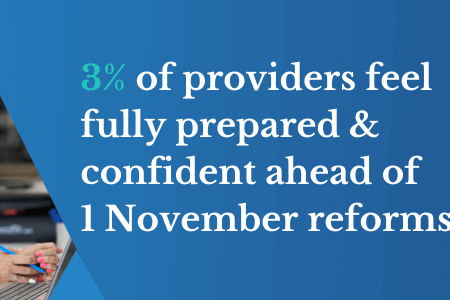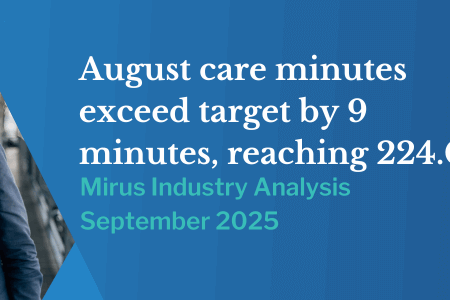If you can measure it, you can manage it – 5 KPIs to monitor for AN-ACC
February 10, 2023 | Aged Care Reform

By Shannon Sanderson, National Business Development Manager
Operational (and financial) success is the goal for every Residential Aged Care Provider because it underpins and enables the purpose of the organisation, to deliver great care. Gaining control over your funding and workforce costs are key in seeing more black than red on your P&L. This is achievable but it does take a mindset shift away from the KPIs managed under ACFI and towards an operationally efficient model.
Here are 5 KPIs we suggest our clients measure and manage to put them on the path to operational success under AN-ACC.
1. % of Forecast vs Assigned AN-ACC Classifications
Providers should ensure their staff have the skills needed to accurately forecast a resident’s AN-ACC classification. The level of accuracy in the forecasted classification against what was assigned to the resident by the Assessment Management Organisations (AMOs) is an important factor in measuring the effectiveness of your funding and care minutes impact.
Accurately forecasted classifications allow the business to plan for future funding (revenue) and resourcing/ care minutes (cost). This includes during pre-admission planning or the ongoing review of resident clinical needs and when validating or challenging the assigned classifications by the AMOs.
2. Ageing of AN-ACC Classification/forecasts
Providers should be measuring the date of the forecast classification (we call this the AN-ACC age) to give clarity on the age of this data. The older the forecast classification the greater the likelihood that a resident’s care needs may have changed.
Similar to KPI #1, this is a strong indicator that the process is not keeping pace with the natural ageing of the resident and therefore the probability is higher that a new forecasted AN-ACC is required. This applies equally to actual classification and the age of forecasts that have not been transacted.
3. Direct Care Costs and Total AN-ACC Funding Income
The Department of Health and Aged Care guidance is that direct care costs should be close to 75% of total AN-ACC funding income. This is the way the AN-ACC funding model and associated care minutes were designed.
If you sit under 75% you could be at risk of not meeting care minute targets. Your rosters maybe inadequate or your claiming levels too high.
Over 75% indicates that your direct care costs are too high as a percentage of funding. This could indicate that your rosters are too high or that you are potentially underclaiming.
4. Care Minute Compliance against Star Rating percentages
Whilst not mandatory until October 1st, Provider’s Care Minutes are being reported in the Star Ratings. To effectively manage care minute compliance, Providers should have visibility of how they are tracking against care minute targets in real time. The scenario Providers will want to avoid is discovering they have not met their care minute compliance when putting together their QFR.
The Star Rating for Staffing is based on a matrix on meeting certain % amounts for RN and overall care minutes. The RN minutes are more heavily weighted. Therefore, a calculation of care minutes delivered can be measured against the desired level of compliance. A higher targeted star rating (and matching demand template/ base roster) will obviously have a higher cost and conversely accepting a lower star rating outcome will have a lower cost.
This KPI should be measuring your ability to meet the objective that you set for each facility.
5. Budgeted Versus Worked Rosters (including Staff Utilisation %)
This KPI will likely be measured by most Providers and should include casual and agency usage. Having access to this in real time allows for informed decision making on workforce needs as things change during the roster period.
Providers should also be able to measure whether their rostered staff contracted hours are being filled when the roster is being developed and during the roster period. Utilising staff contracted hours first before overtime is offered or casual and agency staff are used is one of the biggest workforce cost reductions Providers can make.
The margin attached to AN-ACC funding is more fixed than ever before due to the expectation of minimum care minutes. Therefore, the importance of executing your rosters efficiently is critical.
In our regular interactions with hundreds of providers, we often receive the feedback that data has never been more important in running your business. If you would like more advice on how to implement effective AN-ACC processes and KPIs, please get in touch.


